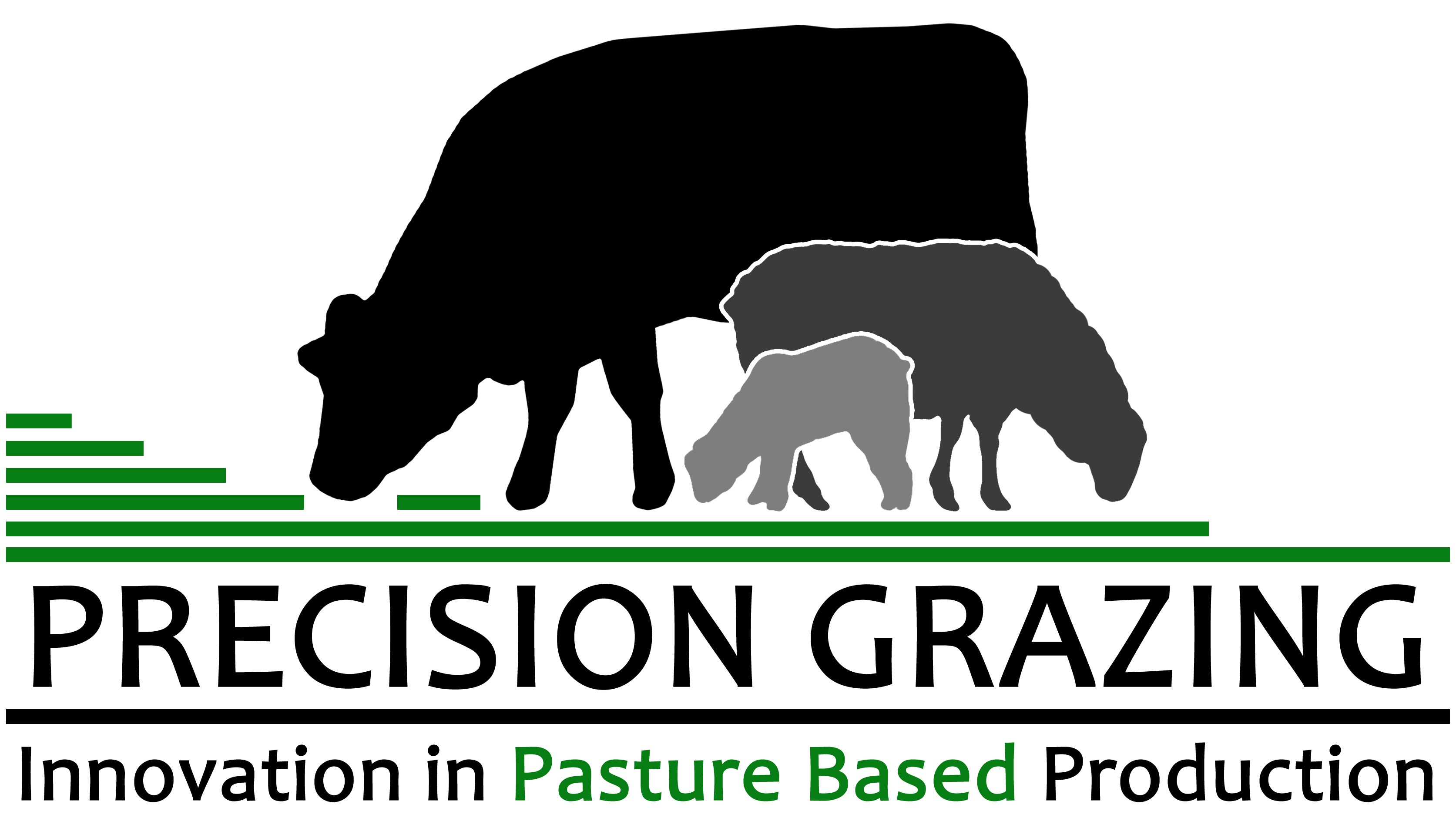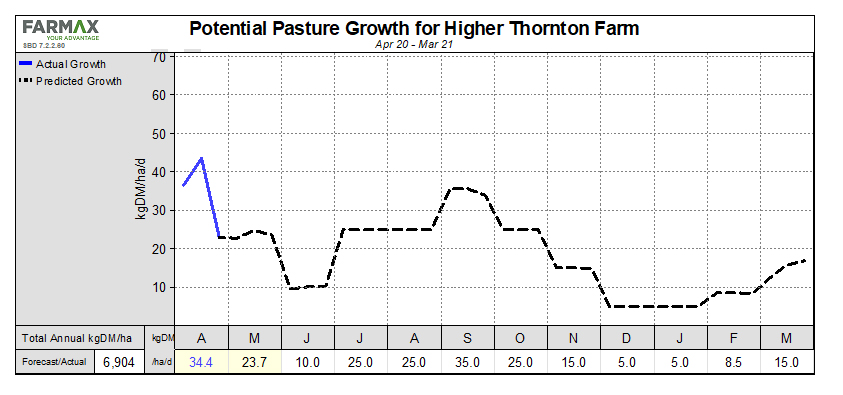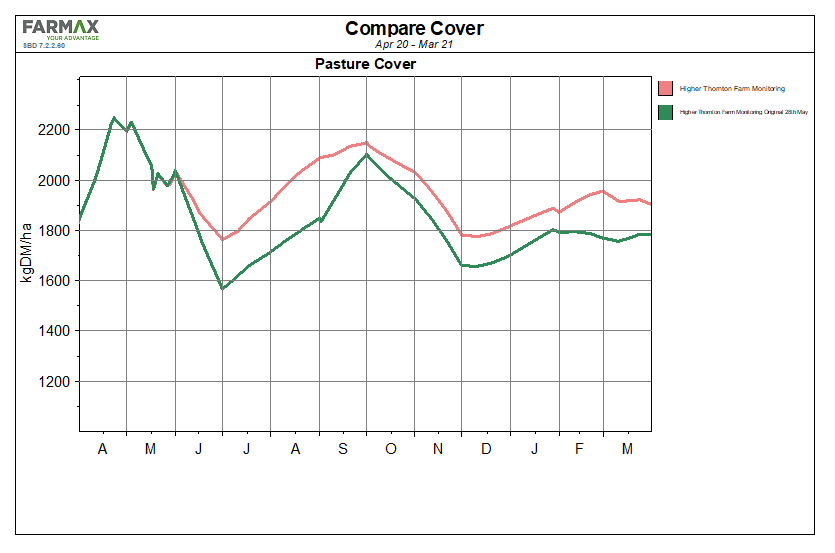Improving resilience to drought through grazing management
Wednesday, 5 May 2021
Forward planning is critical for Chris and Sarah Berry from Exeter who are aiming to increase output and reduce costs. After recently taking on full-time management of Higher Thornton Farm in Devon, Chris is aiming to improve their resilience to dry weather through diverse swards and grazing management.
Working with James Daniels from Precision Grazing as one of their demonstration farms, they are recording the impact that adopting rotational grazing and feed budgeting through the modelling program FARMAX has on livestock and business performance.
Higher Thornton Farm:
- Predominantly a sandy loam soil over red sandstone
- Annual rainfall is less than 30 inches (76cm)
- 430 acres of permanent and temporary pasture; 25 acres of spring barley
- 700 ewes, scanning at 180%, lambing outdoors in mid-March
- 58 spring suckler cows
- 30 autumn suckler cows
- 50 yearling cattle
Since October 2019, Chris has used FARMAX and began this year with a feed budget. Using actual farm data (Average farm cover (AFC), stock weights and grass growth) the feed budget is updated on a two-week basis that allows for a review and for the plan to be adjust as required.
Higher Thornton Farm normally goes dry in July and August but this year, the dry period has occurred 4‒6 weeks earlier, which has proved challenging and meant that Chris has had to review and modify his plans to manage it.
Reviewing the situation on 20 May
- No rain in forecast
- Measuring pasture every two weeks provides Chris with records that growth was less than demand from start of May
- Average farm cover (AFC) at 1900 kg DM/ha vs target of 2100 kg DM/ha
- Pasture growth in May averaged 20 kg DM/ha vs budget of 50 kg DM/ha – this is a loss of 0.9 t DM/ha or 162 t DM for the farm!
- Pasture on lightest ground was burning off and rye-grass going to seed on other areas which caused a reduction in pasture quality
- Re-seeds and summer brassicas sown germinated but not grazable; growth of summer forage crops delayed, affecting likely yield
- Farm has made 400 silage bales of 750 required
FARMAX shows projection of AFC for next 12 months and the current plan in place was not feasible as it shows that without action, pasture cover would drop to very low levels by the end of June, negatively affecting stock performance. It also showed that this would influence the winter-feeding plan as well, affecting pasture cover in spring 2021.
Chris used FARMAX to test some decisions and come up with a feasible plan based on the assumption that:
- June will be dry – pasture growth will average 10 kg DM/ha
- Rain at end of June/July – pasture growth recovers and is normal for the rest of the year
- Farm grows 6.6 t DM in 2020 (vs target of 7.8 t DM)


Monthly estimated pasture growth rates used for dry weather planning scenario.
Short-term strategy and decisions
KISS THE FROG – Deal with the situation, act quickly to reduce demand, preserve remaining high-quality pasture for high-priority stock.
Ewes and lambs
- Wean all lambs at nine weeks – these averaged 26 kg, achieving an av. 350 g/day to weaning. Lambs split into two groups and moved onto best-quality feed. Large fields split into paddocks to provide 5‒7 days’ feed. This increases utilisation and promotes any possible regrowth
- Ewes mouthed and udders checked – 60 cull ewes are sold, rest placed on sacrifice field. They will be fed hay for 3‒4 weeks before udders are rechecked, culls removed for sale and ewes body condition scored, with thin ewes returning to grass (if available) or fed supplement
Cattle
- Do not cut 20 ha of silage to keep as grazing. Split this into paddocks to be grazed by spring-calving cows and calves. Purchase fodder beet to feed to spring-calving cows (only limited supply available)
- Autumn cows weaned, cull cows sold, cows fed straw/hay on sacrifice paddock, calves sold
- Feed 2 kg barley/head to yearling cattle
- Yearling cattle TB tested ready for sale – will sell heaviest 20. If rain hasn’t arrived by 10 June, all will be sold
- Purchase hay or straw for dry cow feed

The impact of these decisions is shown in the graph above which compares the estimated AFC of the original plan (green) vs the current plan. Stock performance is impacted when cover drops below 1700 kg DM/ha and this severely limits ability of farm to respond quickly to rain when it does arrive.
To support farmers during COVID-19 restrictions Precision Grazing are hosting a virtual farm discussion group which allows farmers to share ideas and access expert advice. The group is free to join, apply here: www.precisiongrazing.com/discussion-group.
Next week, Chris and Sarah will be sharing their long-term plans for coping with a dry summer and their work on future planning to become resilient to extreme weather challenges.
Topics:
Sectors:
Tags:

